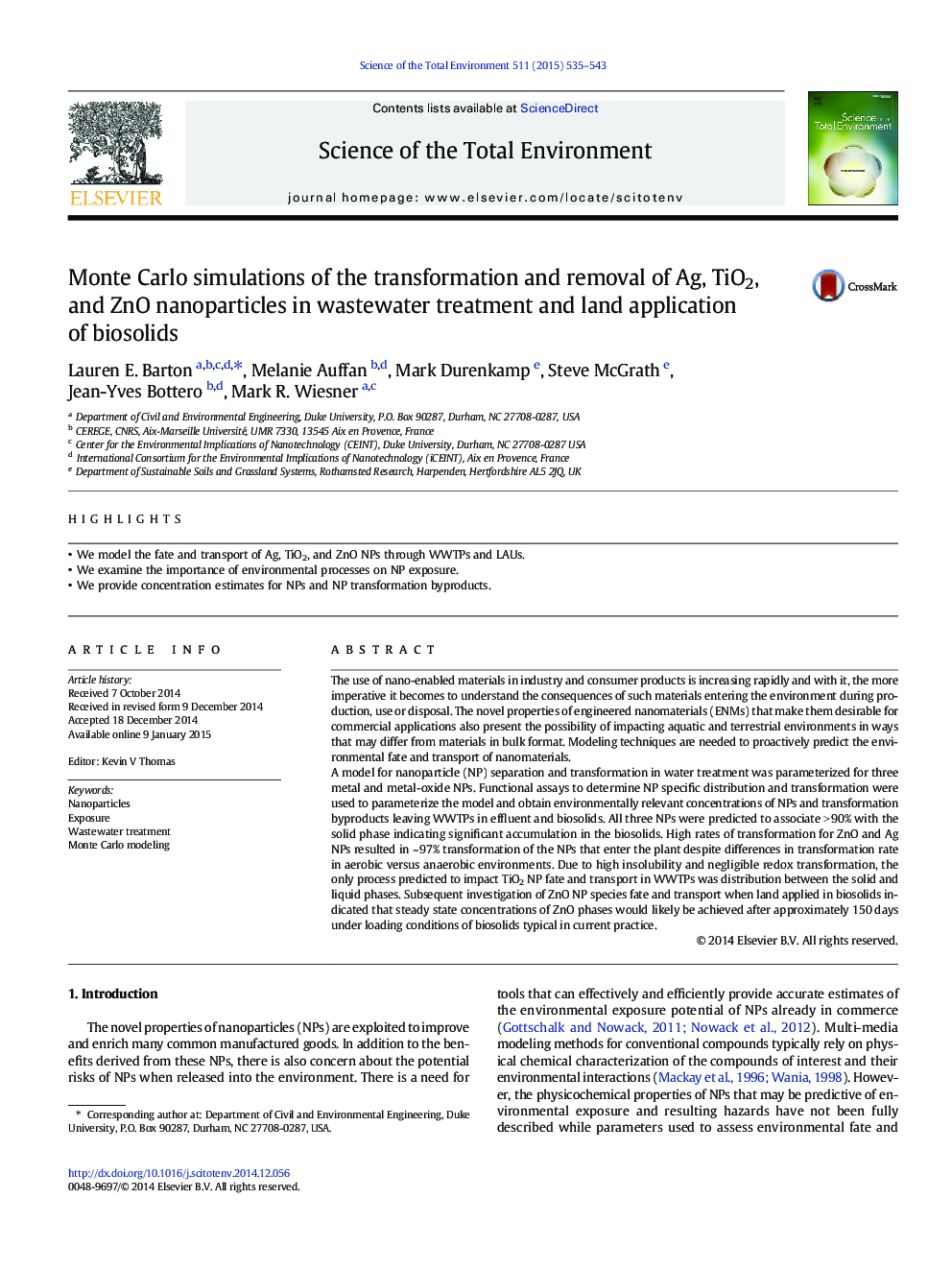| Article ID | Journal | Published Year | Pages | File Type |
|---|---|---|---|---|
| 6327526 | Science of The Total Environment | 2015 | 9 Pages |
Abstract
A model for nanoparticle (NP) separation and transformation in water treatment was parameterized for three metal and metal-oxide NPs. Functional assays to determine NP specific distribution and transformation were used to parameterize the model and obtain environmentally relevant concentrations of NPs and transformation byproducts leaving WWTPs in effluent and biosolids. All three NPs were predicted to associate >Â 90% with the solid phase indicating significant accumulation in the biosolids. High rates of transformation for ZnO and Ag NPs resulted in ~Â 97% transformation of the NPs that enter the plant despite differences in transformation rate in aerobic versus anaerobic environments. Due to high insolubility and negligible redox transformation, the only process predicted to impact TiO2 NP fate and transport in WWTPs was distribution between the solid and liquid phases. Subsequent investigation of ZnO NP species fate and transport when land applied in biosolids indicated that steady state concentrations of ZnO phases would likely be achieved after approximately 150Â days under loading conditions of biosolids typical in current practice.
Related Topics
Life Sciences
Environmental Science
Environmental Chemistry
Authors
Lauren E. Barton, Melanie Auffan, Mark Durenkamp, Steve McGrath, Jean-Yves Bottero, Mark R. Wiesner,
